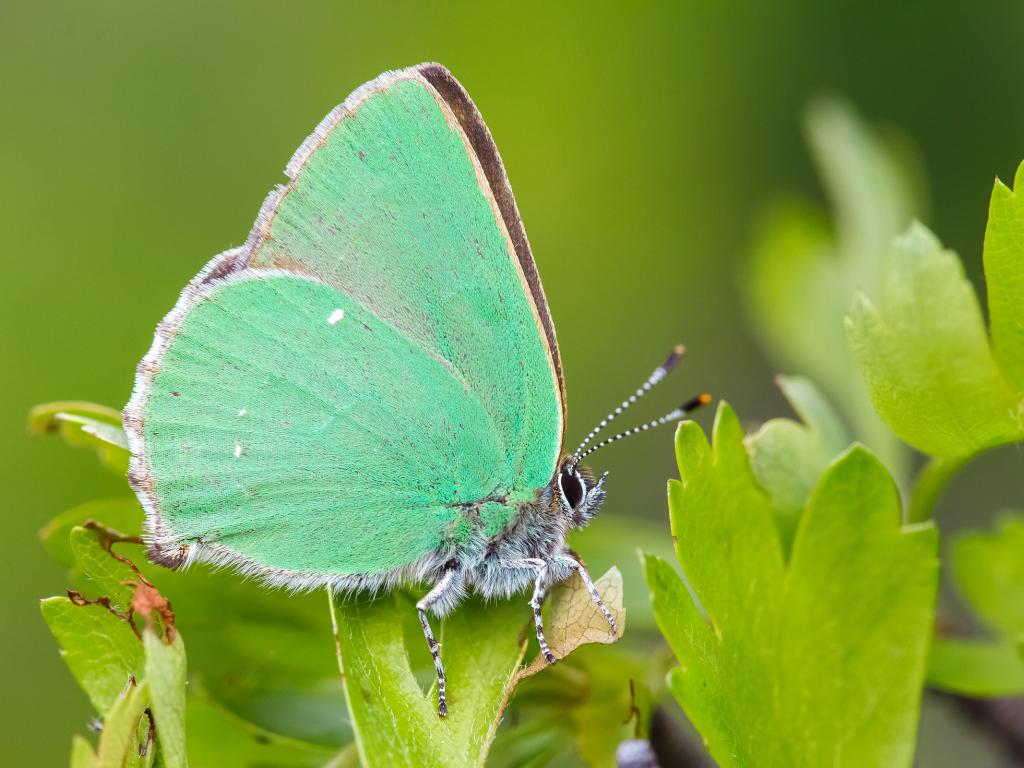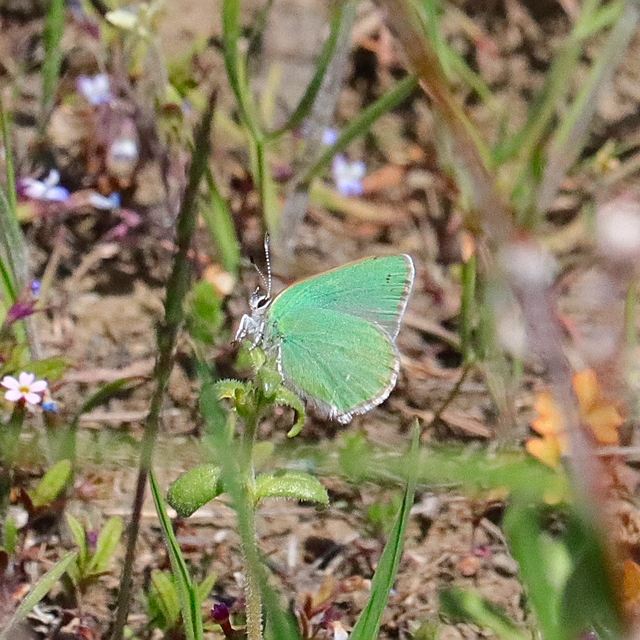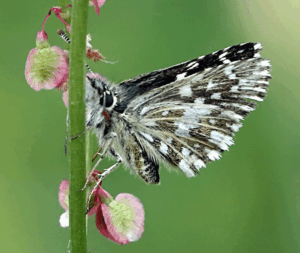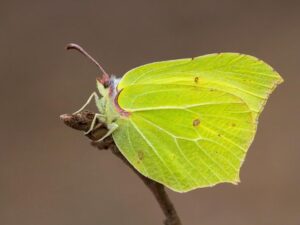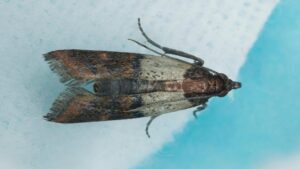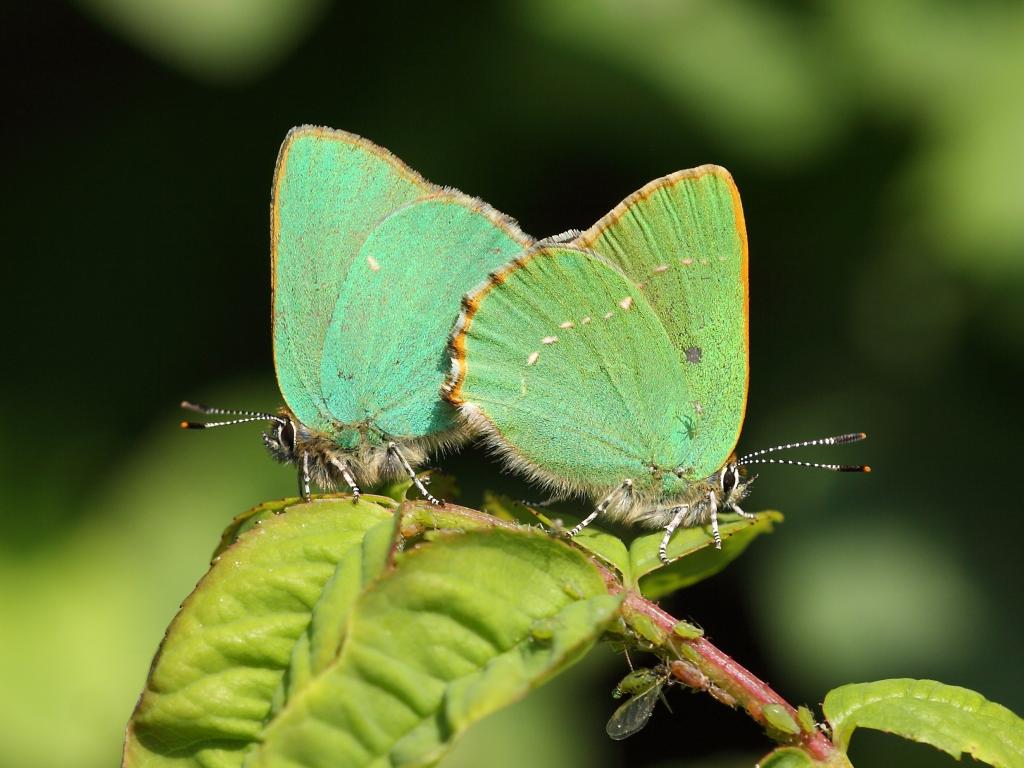
Habitat
Many habitats including; chalk grassland, woodland rides and clearings, heathland, moorland, bogs, railway cuttings, old quarries and rough, scrubby grassland. This species occurs on a wide range of soils but is strongly associated with scrub and shrubs.
The wide range of food plants means that this butterfly is able to use a wide range of habitats including chalk downland, heathland, moorland and clearings in woodland. It is present in wetlands as well as on poor dry meadows, at an elevation of about 0–2,300 metres (0–7,546 ft).
Caterpillar Foodplants
Common Rock-rose (Helianthemum nummularium) and Common Bird’s-foot-trefoil (Lotus corniculatus) are used on calcareous grassland, while Gorse (Ulex europeaus), Broom (Cytisus scoparius), and Dyer’s Greenweed (Genista tinctoria) are used on heathland and other habitats. Bilberry (Vaccinium myrtillus) is used almost exclusively on moorland and throughout Scotland. Other foodplants include shrubs such as Dogwood (Cornus sanguinea), Buckthorn (Rhamnus cathartica), Cross-leaved Heath (Erica tetralix) and Bramble (Rubus fruticosus).
The Green Hairstreak holds its wings closed, except in flight, showing only the green underside with its faint white streak. The extent of this white marking is very variable; it is frequently reduced to a few white dots and may be almost absent. Males and females look similar and are most readily told apart by their behaviour: rival males may be seen in a spiralling flight close to shrubs, while the less conspicuous females are more often encountered while laying eggs.
Although this is a widespread species, it often occurs in small colonies and has undergone local losses in several regions.
Size and Family
- Family: Hairstreaks
- Size: Small
- Wing Span Range (male to female): 27-34mm
Conservation Status
- Butterfly Conservation priority: Medium
- European status: Not threatened
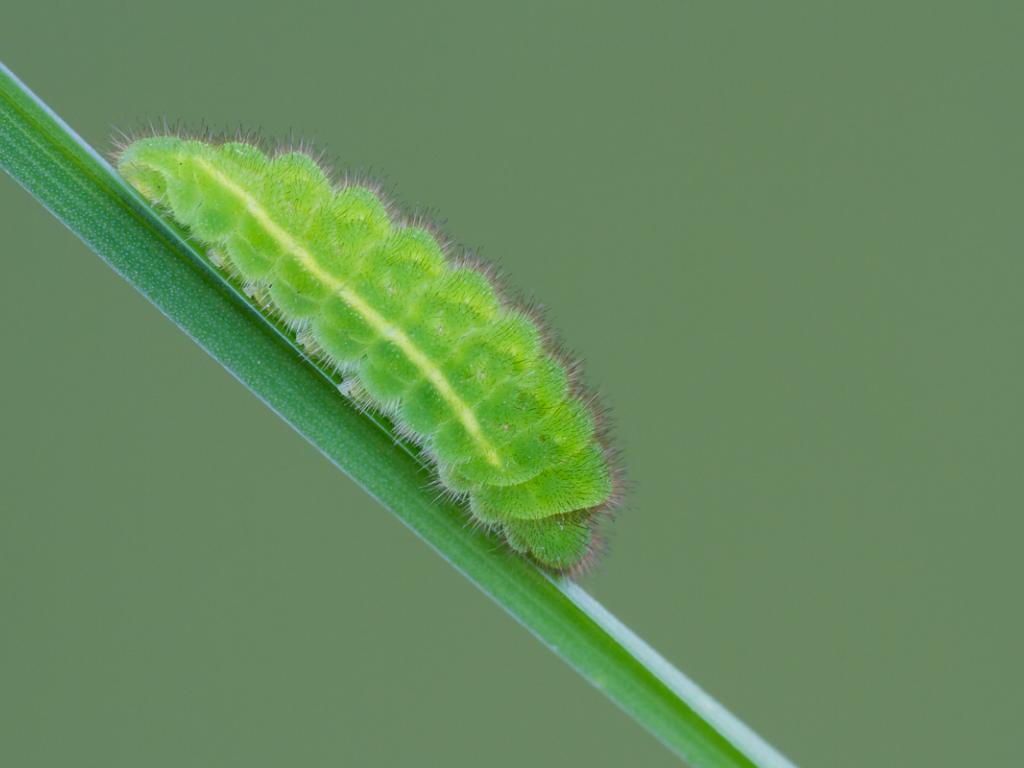
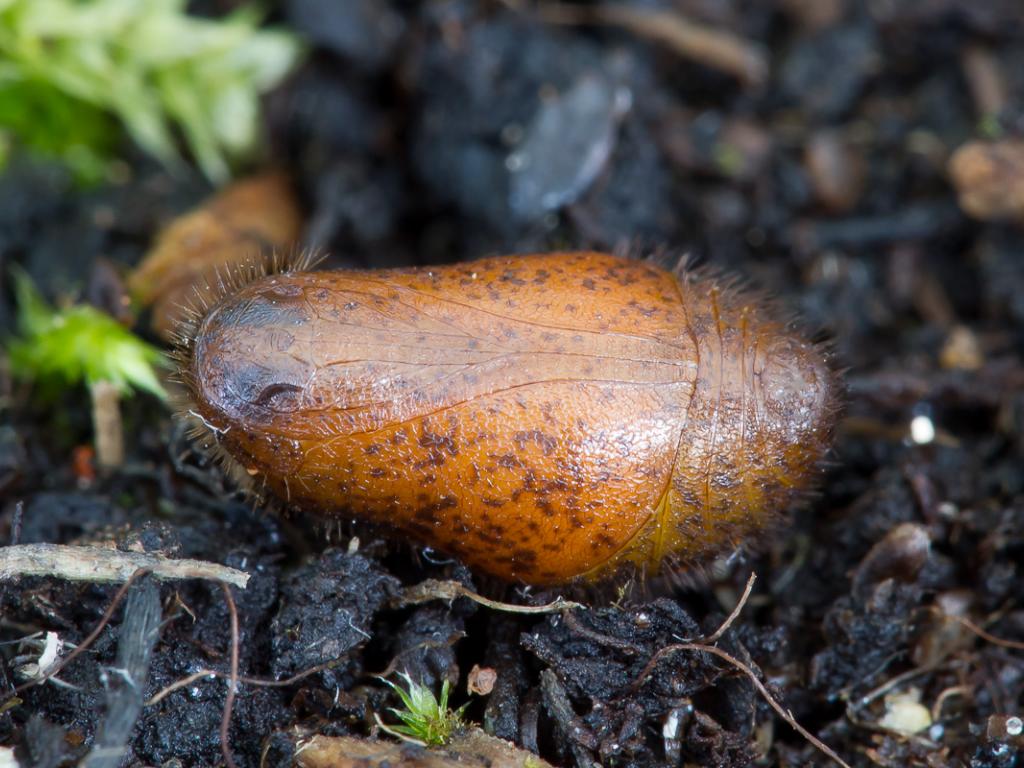
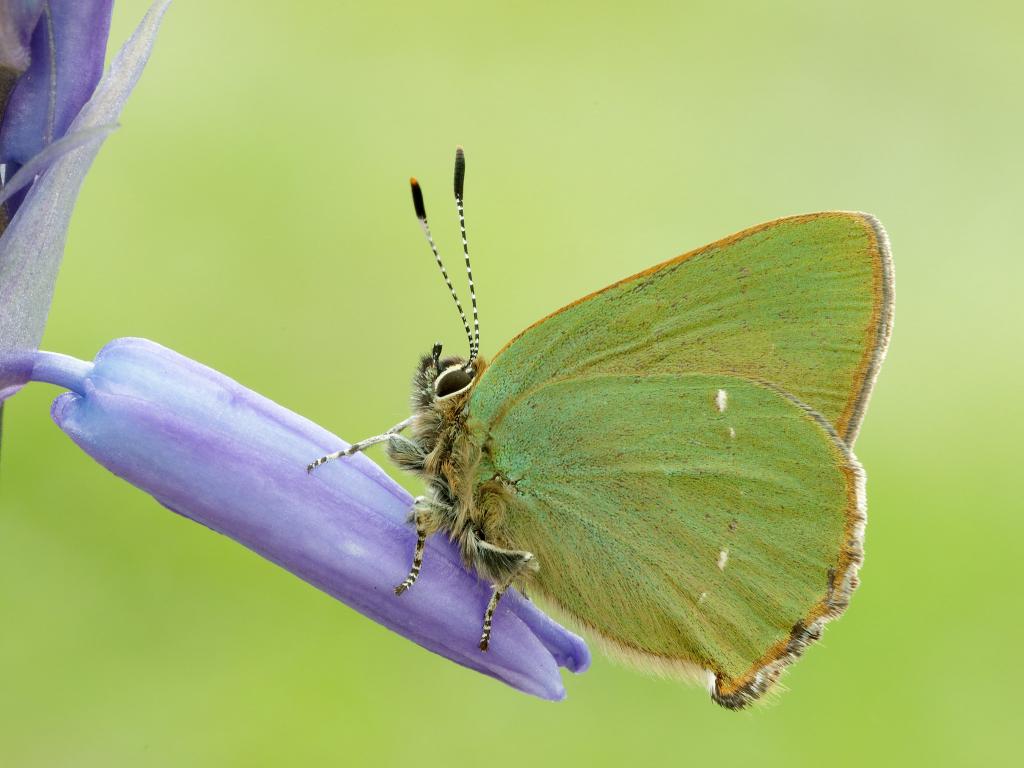
Subfamily: Theclinae
Identification: No tails. Adults variable. Upperside ranges from gray to orange-tinted to bright orange-brown. Underside of forewing green with orange or gray patch. Underside of hindwing yellow-green to green; postmedian white line usually reduced to a few spots.
Wing Span: 1 – 1 1/8 inches (2.5 – 3 cm).
Life History: Males perch on hilltops or in gulches to seek females. Eggs are laid singly on flower buds of host plants; caterpillars feed on flowers and young fruits, and occasionally leaves. Chrysalids hibernate.
Flight: One flight from May-July.
Caterpillar Hosts: Various Eriogonum, Lotus, and Ceanothus species.
Adult Food: Flower nectar.
Habitat: Brushland, chaparral, woods, scrub.
Range: Southern British Columbia and Washington south through California into northern Baja California; east to central Montana, Wyoming, Colorado, and New Mexico.
Conservation: Not usually required.
NCGR: G4 – Apparently secure globally, though it might be quite rare in parts of its range, especially at the periphery.
Management Needs: None reported.
Did you know?
Adult green hairstreaks emerge in spring, and the females lay their eggs. After a week, the caterpillars hatch and feed. In July, they make their way to the ground to pupate and overwinter in the leaf litter. New butterflies emerge the following the spring.
About
The green hairstreak is a small, fairly shy butterfly that spends most of its time perched on vegetation or sunbathing. Adults fly in the spring, between April and June, and males can sometimes be seen chasing each other in the sun. Found in dry, scrubby habitats, including moorland and heathland, the caterpillars feed on a variety of plants, including gorse, broom and bilberry.
How to identify
The green hairstreak is a small butterfly. The undersides of its wings are bright green with a faint streak of white spots. The uppersides of its wings are dull brown. It rests with its wings closed.
